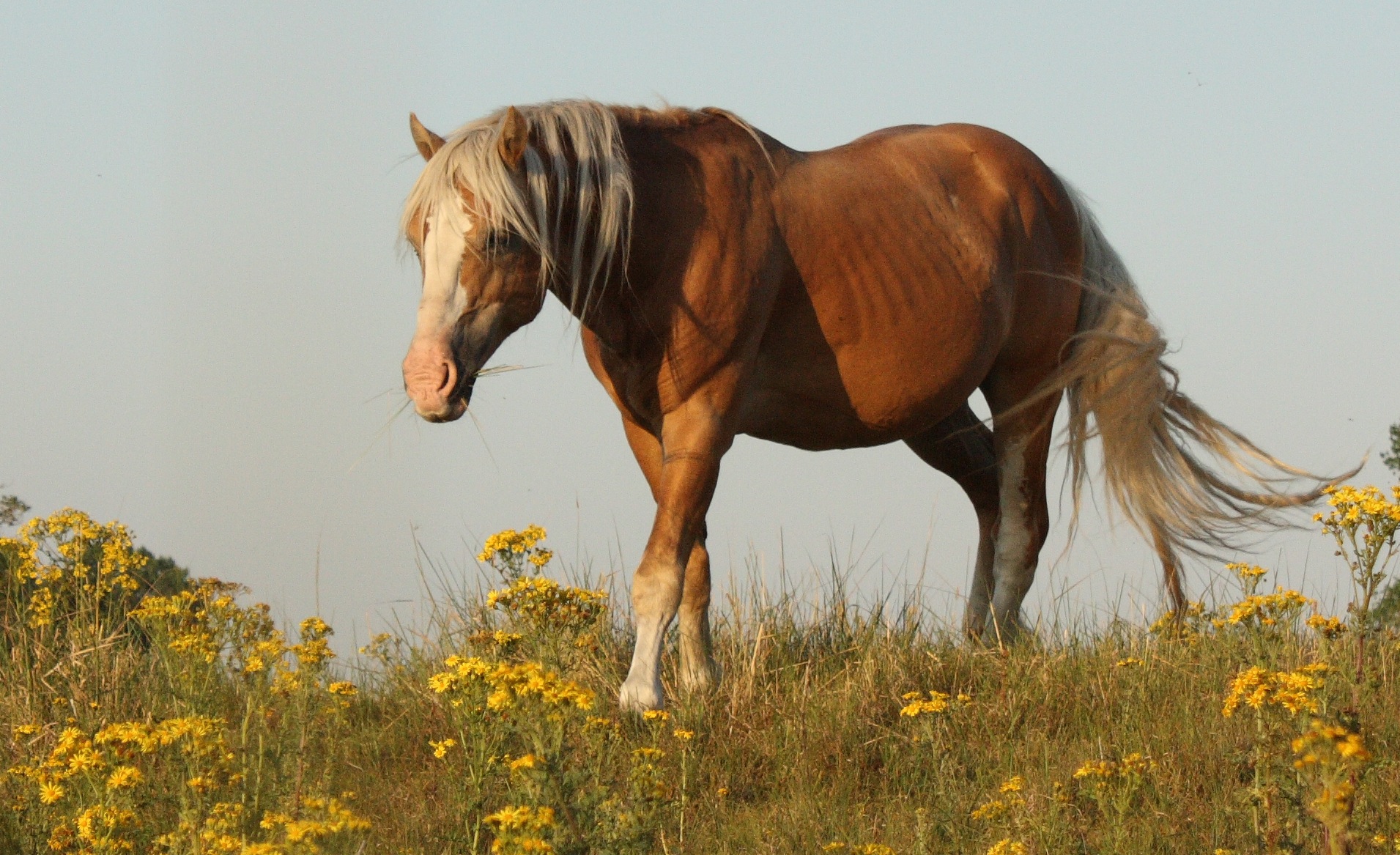(Image source: Benoît Deniaud/Flickr/Creative Commons)
Nelly was wider than she was tall (about five hands or so), and kind of a jerk. She was old, and some brat (me) was always trying to put a saddle on her and play National Velvet in her paddock. But Nelly had that infuriating and endearing quality that most old animals do, which is a total and complete not caring about anything unrelated to food. Nelly did things on her own terms. And those terms were sweet feed. It was only with said brat flailing her legs around and the luscious smell of sweet feed six feet away that Nelly would move from a trot to a slow canter.
I’m not positive what happened to Nelly, but I do know that the USDA recently approved two “Grants of Inspection” for horse slaughterhouses in New Mexico and Iowa. On Friday, a federal court in New Mexico will hear arguments for an injunction against the USDA. If it doesn’t go through, those slaughterhouses could be slaughtering horses as soon as Aug. 4. Assurances have been made that the horse meat won’t be sold in the U.S. for human consumption (it will just be used to feed other animals), but some argue that the meat will be sold for human consumption in Mexico, in which case it could be repackaged and shipped back to the U.S. as meat filler.
| If we’re going to eat meat—especially in the quantities we do—let’s ask for the basics: 1) humane living (and dying) conditions, 2) sustainable methods of production, 3) clear labels on the quality of life of the animals being consumed. |
Here’s what’s wrong with that last paragraph: 1) “slaughterhouses,” 2) “repackaged and shipped back” and 3) “meat filler.” (Notice how I didn’t say “horse meat.”)
Let’s go through these point by point.
1. Slaughterhouses. These are places where animals are brought to be killed, from a truck, in many cases from across state lines. Instead of being killed by people who have raised them, given them names, and (hopefully) let them out to pasture (in the literal sense), these animals are put out to pasture (in the metaphorical sense) by machines. In bulk. While this is due in part to state and federal regulations regarding disposal of animal bodies, billions of animals are slaughtered this way every year in the U.S. There are even instances of animals (not horses, yet) being ground up alive. And there are concerns about chemicals that the horses have been exposed to—but don’t worry. The USDA says it will conduct post-mortem inspections.
2. Repackaged and shipped back. The meat from these animals is then moved across international borders, sold there as meat, and then repackaged as something else, and shipped back across international borders, to the country with the slaughterhouses. Where they are sold as something else. That is not quite food. Which brings me to my next point.
3. Meat filler. Much like “cheese” and “whiz,” “meat” and “filler” are two words that are fine by themselves but should never be joined together. If it’s not meat, then what is it? It’s probably the stuff that went in those IKEA meatballs. It’s the equine equivalent of pink slime. It’s meat whiz.
Horse meat, is, by varying accounts, more or less delicious. The problem is not that horse meat could make it in to the food supply. The problem is that we have a broken food supply system in which the demand for meat is unsustainable, animals are slaughtered in bulk, and their meat is shipped across international borders only to return to the nation in which they were rounded up and slaughtered in the first place.
But maybe, just maybe, the biggest problem is us. As consumers we want to pay $4.99 for a combo plate of meatballs and lingonberry sauce, but then get upset when we find out we accidentally ate Secretariat instead of Wilbur or Elsie.
Some may point out that there’s been a cultural aversion to eating horse meat in the U.S. That’s a valid statement, until one considers the fact we have selectively ignored these taboos in the past. In the 1950s and the 1970s, there were butchers that made the majority of their sales on horse meat. Horse steaks even stayed on the menu at the Harvard Faculty Club until the late 1970s.
Meat consumption worldwide has reached an all-time high, and continues to grow. Animal rights groups have had their leopard-painted genitals in a bunch about things like horse meat and foie gras for an awfully long time, but these red herring crusades (which can border on speciesism) ultimately undermine the cause by distracting from the bigger picture: our food supply is pretty messed up.
If we’re going to eat meat—especially in the quantities we do—let’s ask for the basics: 1) humane living (and dying) conditions, 2) sustainable methods of production, 3) clear labels on the quality of life of the animals being consumed.
I’d rather eat Nelly than meat whiz.
Alexis Zanghi studies creative writing at the New School.



0 Comments